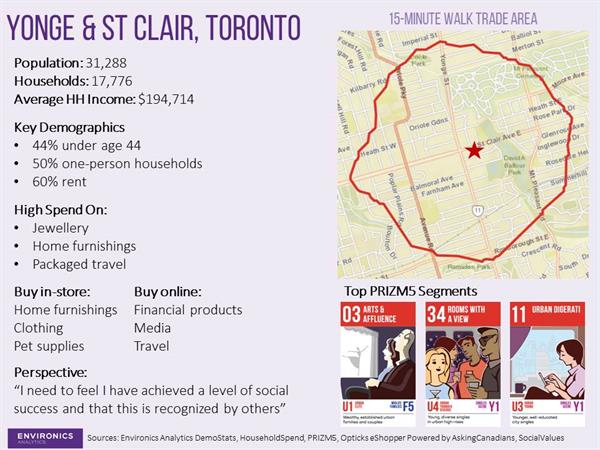Using Data To Fill Retail Vacancies
It’s an interesting time to support our real estate and retail customers. Both of these industries are rapidly transforming as technology gives consumers more options for making and researching purchases, as well as connecting with their favourite brands. Most major retailers are investing in both digital and bricks-and-mortar properties, with the latter looking increasingly like a chess board as locations are carefully selected for their ability to provide a rich brand experience to a target customer, or serve as a pick-up point for online purchases, or as a real-world showroom.
As more retailers consider their store network as just one part of a digital ecosystem, landlords, property managers and developers are feeling the pinch – just as new retail space is becoming available within new shopping centres and multi-use condo and housing developments. Leasing agents are challenged to prove the value of a given storefront to retailers, banks, telcos and other prospective tenants who need fewer stores and have so many options to choose from.
This is where data comes in. Data have always been important to the real estate industry, helping size the total population or estimated expenditure within a trade area surrounding a shopping centre, helping real estate teams prove to potential tenants that, with an estimated proportion of that trade area’s estimated spend, a site can achieve a certain profit margin.
Now that each store in a network increasingly plays a unique role within a larger corporate strategy – back to that chess analogy again – real estate teams are taking their use of data to the next level, using carefully selected data points to demonstrate the value of a particular site within a larger network. Here’s what we’ve observed has been working:
- The overall market size is important, but consumer segmentation tools like PRIZM5 help convey whether the market contains the right kinds of people who are going to embrace a particular brand. These customer insights help build a case why a property is a good bet – or an opportunity to suggest a different property in the portfolio.
- Detailed lifestyle data like SocialValues or Opticks eShopper Powered by AskingCanadians™ are being used to understand how area consumers engage with various categories online and offline. Knowing that targeted consumers may feel time stressed, or that they generally buy a category online, hints at the role a site could play, whether as a showroom, quick pickup and returns location, or place where customers can enjoy an immersive brand experience.
- It’s important to avoid information overload – and to make sure that the data points selected and the way they’re presented make it easy to convey value. Successful retail leasing teams are doing their homework on their prospects’ business goals, having conversations with company executives, searching their websites and reading annual reports for a deeper understanding of their real estate needs. Such initiatives make it easier to identify a handful of relevant data points and engage in productive discussion.
The graphic below shows these techniques at work in describing a trade area, around Yonge Street and St. Clair Avenue in Toronto, where some storefronts have been empty most of the past decade. Who lives in this area? How do they spend their time and money? What retail possibilities do these numbers suggest, and what banners or formats come to mind? How could this information be tweaked to support a specific opportunity? What do you think?



